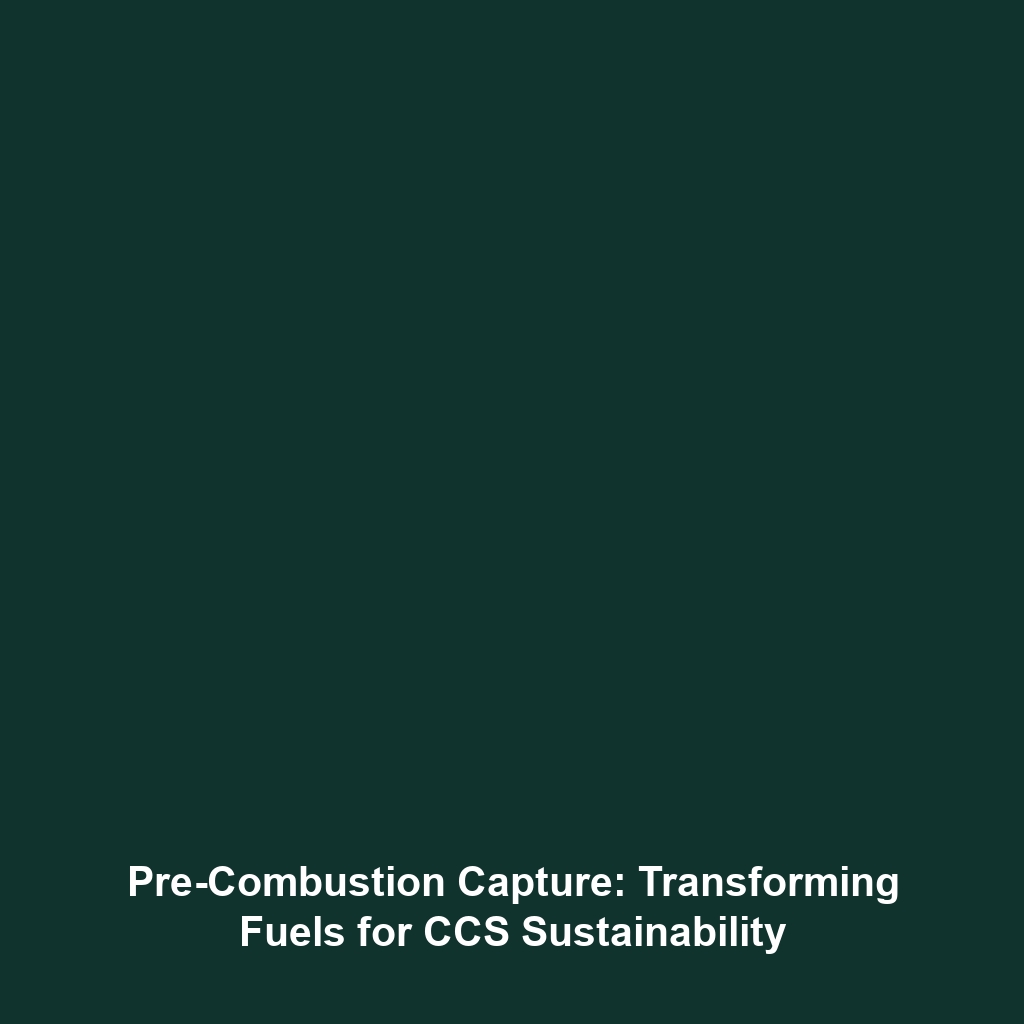The Project Capturing 90% of CO2 Emissions for Enhanced Oil Recovery
In the face of rising global temperatures and climate change, projects focusing on Carbon Capture and Storage (CCS) are becoming increasingly vital. This particular project captures up to 90% of the CO2 emissions from industrial plants, safely storing it underground while utilizing a portion for enhanced oil recovery (EOR). This innovative approach not only mitigates climate impact but also enhances oil extraction, demonstrating the dual benefits of CCS technology in the quest for sustainable energy solutions.
Key Concepts of Carbon Capture and Enhanced Oil Recovery
Carbon Capture and Storage (CCS) is a transformative technology that involves capturing carbon dioxide emissions from industrial sources and securely storing them underground. This project utilizes the following key concepts:
- Carbon Capture: Processes that capture up to 90% of CO2 emissions released from industrial activities.
- Storage Techniques: Long-term storage of captured CO2 in geological formations to prevent it from entering the atmosphere.
- Enhanced Oil Recovery (EOR): Injecting stored CO2 into oil reservoirs to increase oil recovery, while simultaneously sequestering CO2.
This innovative integration of CCS with EOR not only reduces greenhouse gas emissions but also offers a pathway towards more efficient oil extraction, showcasing its significance in the broader context of climate action.
Applications and Real-World Uses
The practical applications of this CCS project are numerous and impactful. Here are some significant real-world uses:
- Oil Production Increase: By injecting CO2 into oil reservoirs, oil extraction rates can increase by 10-20%.
- Mitigation of Carbon Emissions: Achieving substantial reductions in CO2 emissions from industrial plants contributes to global climate goals.
- Economic Benefits: Enhanced oil recovery can provide an additional revenue stream for industries investing in CCS technology.
These applications highlight how CCS can play a pivotal role in reducing emissions while optimizing resource recovery in an environmentally conscious manner.
Current Challenges in CCS Implementation
Despite its advantages, there are several challenges associated with implementing this CCS project effectively:
- High Initial Costs: The installation and operational costs of CCS technology remain significant barriers for many companies.
- Regulatory Hurdles: Navigating the complex regulatory landscape can impede project development and prevent widespread adoption.
- Public Perception: Concerns about the safety and environmental impact of underground CO2 storage can lead to public resistance.
Addressing these challenges is crucial for the successful integration of CCS technologies into scale operations.
Future Research and Innovations
As the global community seeks more effective methods for combating climate change, ongoing research in Carbon Capture and Storage (CCS) is promising. Some emerging innovations include:
- Next-Generation Capture Technologies: Advancements in materials and chemicals that enhance CO2 capture efficiency.
- Integrative Solutions: Developing facilities that not only capture CO2 but also utilize it in various industrial processes.
- Monitoring and Verification Techniques: Improved methods for ensuring the long-term safety and effectiveness of CO2 storage.
These ongoing developments will likely drive the effectiveness and adoption of CCS technologies in the coming years.
Conclusion
In summary, the project that captures up to 90% of a plant’s CO2 emissions and utilizes it for enhanced oil recovery exemplifies the innovative potential of Carbon Capture and Storage (CCS) technologies. By addressing both environmental and economic challenges, this initiative is pivotal in our efforts to mitigate climate change while promoting sustainable oil extraction. For further exploration of CCS technologies and their importance in future energy solutions, consider reading about the benefits of CCS and advanced EOR techniques.









